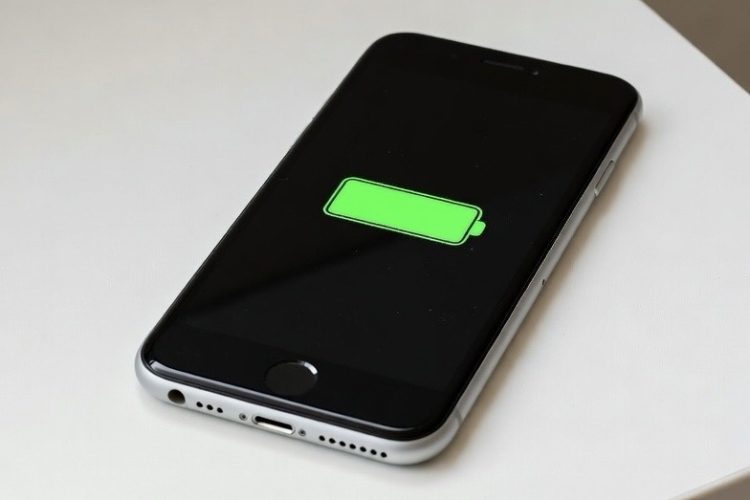Maximize iPhone battery life with these proven tips. Check Settings > Battery to spot power-hungry apps and enable battery percentage for easy monitoring. Turn on Low Power Mode via Control Center to cut background app refresh, dim screen brightness, and pause animations. Use Dark Mode on OLED screens, disable Always-On Display, and set Auto-Brightness to save power. Shorten Auto-Lock time and reduce motion effects in Accessibility settings. Limit location services to “While Using the App,” turn off Bluetooth/Wi-Fi when unused, and prefer Wi-Fi over cellular. Stop background app refresh in Settings > General. Enable Optimized Battery Charging to cap at 80% and reduce wear. Avoid extreme heat, update iOS regularly, and restart occasionally to fix glitches. These simple tweaks extend daily use and preserve battery health.
Long Version
Maximizing iPhone Battery Life: Essential Tips and Strategies
In an era where our iPhones serve as lifelines for communication, productivity, and entertainment, optimizing battery life is crucial to avoid the frustration of constant recharging. Whether you’re dealing with persistent battery drain on an older model or aiming to extend the endurance of a newer device running the latest iOS versions like iOS 18 or iOS 26, understanding how to manage power consumption can make a significant difference. By delving into settings, apps, and hardware considerations, you can enhance battery health, reduce unnecessary charge cycles, and ensure your iPhone lasts through demanding days. This guide draws on proven techniques to provide a complete roadmap for battery saving, incorporating everything from basic adjustments to advanced optimizations, including lesser-known features like adaptive power modes and charge limits.
Understanding Your iPhone’s Battery Usage
Start by monitoring your device’s power habits to identify culprits behind battery drain. Navigate to Settings > Battery to view a detailed breakdown of consumption, including battery percentage and usage charts that highlight which apps and features are the biggest offenders. This section also reveals insights like background activity, where apps continue to operate even when not in use, contributing to overall drain. Enabling battery percentage in the Control Center or directly in Settings offers at-a-glance visibility, helping you track progress as you implement changes. For long-term battery health, keep an eye on the Battery Health metric, which shows maximum capacity and suggests when performance management might kick in to prevent unexpected shutdowns. Factors like recent iOS updates can temporarily affect this, as ongoing background processes like device setup or software optimization may appear as insights in the Battery menu. Additionally, check the estimated charging time feature in newer iOS versions, which appears on the lock screen when plugged in, helping you decide how long to charge based on your needs.
Activating Power-Saving Modes
One of the simplest ways to boost battery life is through built-in power modes. Low Power Mode, available since iOS 9 and refined in later versions, automatically activates at 20% or 10% battery levels but can be toggled manually via Settings > Battery or the Control Center for quick access. It reduces screen brightness, disables background app refresh, limits visual effects like animations and parallax effect, throttles CPU performance, and pauses non-essential tasks like automatic downloads and iCloud syncing, extending runtime without drastically altering usability. Newer additions like Adaptive Power Mode, available on iPhone 15 Pro and later models with iOS 18 or iOS 26, take this further by using on-device intelligence to predict your usage patterns and make subtle adjustments, such as dimming the display by a small percentage or limiting background activity more dynamically. Enable it in Settings > Battery > Power Mode for seamless, automated savings. For even more control, Focus Modes can be customized to suppress notifications and limit app activity during specific scenarios, like work or sleep, indirectly aiding battery saving by minimizing distractions and background processes. If you’re in a pinch, restarting your device can also reset temporary glitches causing excess drain.
Optimizing Display and Visual Settings
The display is often the primary source of battery drain, so fine-tuning it yields immediate results. Lower screen brightness manually via the Control Center or enable Auto-Brightness in Settings > Accessibility > Display & Text Size to let your iPhone adjust based on ambient light, saving power in varied environments. On models with OLED displays, switching to Dark Mode under Settings > Display & Brightness is particularly effective, as it reduces pixel illumination in dark interfaces, leading to noticeable battery savings during prolonged use—especially if set to automatic based on sunset and sunrise. Disable Always-On Display if available on your model (iPhone 14 Pro and later), as this feature keeps the screen partially active even when locked, consuming extra energy; toggle it off in Settings > Display & Brightness > Always On Display. Similarly, simplify your setup by removing dynamic wallpapers or live wallpapers, which involve subtle animations, and limit widgets or lock screen widgets that constantly update and draw power—press and hold the lock screen, tap Customize, and remove them to stop background refreshes. To further cut visual overhead, reduce motion in Settings > Accessibility > Motion, which tones down parallax effect and other animations for a smoother, less demanding experience. On Pro models with ProMotion, limit the frame rate in the same menu to reduce GPU load. Shorten the Auto-Lock time in Settings > Display & Brightness > Auto-Lock to 30 seconds or less to minimize unnecessary screen-on time, and disable Raise to Wake if you don’t need the screen to activate when lifting the device.
Managing Apps and Background Activity
Apps play a pivotal role in battery consumption, especially through features like background app refresh. Head to Settings > General > Background App Refresh to disable it entirely or restrict it to Wi-Fi only, preventing apps from updating content when not in focus and thus curbing unnecessary battery drain. Review individual apps in the Battery settings to offload or delete those causing excessive background sensor readings, such as fitness tracking apps that monitor heart rate notifications or other metrics. Notifications can also pile up; customize them per app in Settings > Notifications to reduce alerts, which in turn limits screen wake-ups and haptic feedback vibrations that sap power—consider using Focus modes for broader control. For tactile elements, disable keyboard feedback and system haptics in Settings > Sounds & Haptics > Keyboard Feedback to eliminate the energy used by the Taptic Engine for every tap or alert. Turn off Live Activities for apps in Settings > [App Name] or under Face ID & Passcode to prevent constant updates on the lock screen or Dynamic Island. Additionally, disable features like Live Voicemail in Settings > Phone if you don’t use it, as it processes calls in the background.
Connectivity and Location Services
Wireless features are convenient but power-hungry. Location services, powered by GPS, should be set to “While Using the App” for most apps in Settings > Privacy & Security > Location Services, ensuring they don’t track in the background—turn off entirely for non-essential apps or disable system services like Significant Locations. Toggle off Bluetooth in the Control Center when not pairing devices, as it scans continuously otherwise. For Wi-Fi connections and cellular connections, enable Airplane Mode temporarily in low-signal areas to stop constant searching, or switch to Wi-Fi calling where available to bypass cellular drain. Prefer Wi-Fi over cellular data when possible, as it uses less power; disable Wi-Fi Assist in Settings > Cellular to avoid automatic switching. In areas with poor coverage, turn off 5G by going to Settings > Cellular > Cellular Data Options > Voice & Data and selecting LTE. Disable nearby AirDrop sharing in Settings > General > AirDrop by setting it to Receiving Off, and turn off “Hey Siri” in Settings > Siri to stop constant microphone listening. If traveling, disable data roaming to prevent high-power searches for foreign networks.
Charging Habits and Battery Health Maintenance
Smart charging practices preserve battery health over time. Enable Optimized Battery Charging in Settings > Battery > Battery Health & Charging, which learns your routines to hold the charge at 80% until you need it, reducing wear from full cycles. Newer models offer an Optimized Charge Limit, allowing caps like 80% to extend lifespan further—tap Charging Optimization and select 80% Limit. Use USB charging with a powered computer or adapter, avoiding outdated methods that could inefficiently drain power. Avoid extreme ambient temperatures—keep your iPhone away from direct sunlight, hot cars, or cold environments, as heat accelerates degradation and cold can temporarily reduce capacity. Remove cases during charging if they trap heat. For storage, maintain around 50% charge in a cool place (around 20°C or 68°F) to minimize long-term battery health decline. If your battery is draining unusually fast, update to the latest iOS in Settings > General > Software Update, as patches often fix bugs affecting power management. For on-the-go needs, consider a MagSafe power bank or external battery pack to top up without relying solely on the internal battery. Regularly check for software updates, as they can include optimizations for better efficiency.
By integrating these strategies, you’ll not only combat immediate battery drain but also safeguard your iPhone’s overall battery health for years to come. Regular iOS updates often include refinements to these features, so stay current for the latest enhancements. With mindful adjustments, your device can deliver reliable performance without compromising on the features you love.







